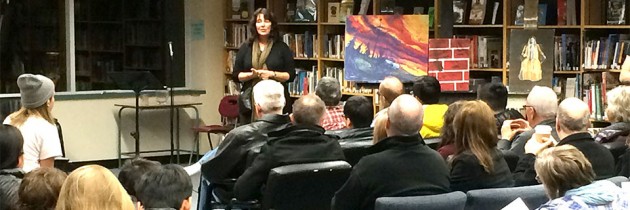The Gift of Indigenous Education
By Tricia Stobbe, Executive Director, CPABC. Reprinted with permission from the CTABC Update, December 2015, Volume 19, Issue 4 ◊
Recently, I attended three different learning days with the same theme: indigenous education. What is it? How does it apply to the new BC Ed Plan? How do we teach it? All three days had the same message: in order for educators to bring students mindfulness about Aboriginal persons and education, we need to first understand who they were and how they lived prior to colonization, Canada’s policy on colonization and assimilation, and particularly, the effects that residential schools had, and continue to have, on generations of indigenous people. As a result of my learning, I was brought to tears as I realized how my unconscious thoughts and views of present day Aboriginal people had been borne out of ignorance and misunderstanding. This was the first step toward the healing for both sides – European people AND Indigenous people. My newfound understanding and resolve to change my attitudes and beliefs was a gift that I am grateful for.
Chief Harvey Underwood of the Tsawout First Nation on the Saanich Peninsula near Victoria, addressed us in his welcome to the day of learning, “This is the start of reconciliation for me, so we can begin to put the past and residential schools behind us.” In her presentation, his wife, Lillian, said, “don’t see me as a stranger, see me as a child of God…I am first spirit, God’s spirit…We don’t want to be your mission field anymore…we can be co-equal participants in the mission of the church.”
Kathi Camilleri, Irish and Metis Cree, pointed out that, “we are all indigenous in some way. Your village may have had tartans and wooden shoes, but we are all indigenous somewhere along the way…” She mentioned that, “each one of us has been given unique gifts from Creator made to make this world a better place for our children, our grandchildren, and our great-grandchildren.”
How does this help your role as an educator? Each of us needs to first understand the effects of Residential Schools and Canada’s Policy of Assimilation from a non-blame, and non-shame perspective. We need explore our personal role in supporting the revival of the values that worked so beautifully in indigenous villages for thousands of years. We need to acknowledge that we are not the experts, nor can we do this alone. We need to invite First Nations elders into the conversation.
- Do you know the indigenous people who first resided on the lands on which you now live? Work?
- What is the name of the Nation or Band who now live alongside you?
- Are there bridges you can begin to build? Connections you can begin to make?
We have a lot more learning to do and need to move thoughtfully and authentically. Do so gently and humbly, from a position of learning. As Kathi said, “we have been given one mouth and two ears so we can listen twice as much as we talk.” Certainly, we can all begin by “treating one another as sacred gifts to one another,” and use the unique gifts given to each of us to make this world a better place. For more information on the use of authentic First Peoples resources, please see First Nations Education Steering Committee at fnesc.ca.

